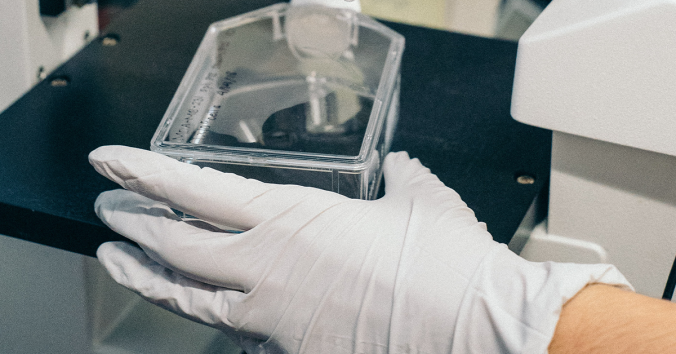Some ideas can have such a charm that you only need to hear them once to immediately feel that they are probably true: “there must be some grain of truth in it.” Conspiracy theories and urban myths probably spread in part because of how they manage to charm susceptible human minds by ringing true. It is said that even some states of illness are spread because the idea of the illness has such a strong impact on many of us. In some cases, we only need to hear about the diagnosis to start showing the symptoms and maybe we also receive the treatment. But even the idea of diseases spread by ideas has charm, so we should be on our guard.
The temptation to fall for the charm of certain ideas naturally also exists in academia. At the same time, philosophy and science are characterized by self-critical examination of ideas that may sound so attractive that we do not notice the lack of examination. As long as the ideas are limited hypotheses that can in principle be tested, it is relatively easy to correct one’s hasty belief in them. But sometimes these charming ideas consist of grand hypotheses about elusive phenomena that no one knows how to test. People can be so convinced by such ideas that they predict that future science just needs to fill in the details. A dangerous rhetoric to get caught up in, which also has its charm.
Last year I wrote a blog post about a theory at the border between science and philosophy that I would like to characterize as both grand and charming. This is not to say that the theory must be false, just that in our time it may sound immediately convincing. The theory is an attempt to explain an elusive “phenomenon” that perplexes science, namely the nature of consciousness. Many feel that if we could explain consciousness on purely scientific grounds, it would be an enormously significant achievement.
The theory claims that consciousness is a certain mathematically defined form of information processing. Associating consciousness with information is timely, we are immediately inclined to listen. What type of information processing would consciousness be? The theory states that consciousness is integrated information. Integration here refers not only to information being stored as in computers, but to all this diversified information being interconnected and forming an organized whole, where all parts are effectively available globally. If I understand the matter correctly, you can say that the integrated information of a system is the amount of generated information that exceeds the information generated by the parts. The more information a system manages to integrate, the more consciousness the system has.
What, then, is so charming about the idea that consciousness is integrated information? Well, the idea might seem to fit with how we experience our conscious lives. At this moment you are experiencing multitudes of different sensory impressions, filled with details of various kinds. Visual impressions are mixed with impressions from the other senses. At the same time, however, these sensory impressions are integrated into a unified experience from a single viewpoint, your own. The mathematical theory of information processing where diversification is combined with integration of information may therefore sound attractive as a theory of consciousness. We may be inclined to think: Perhaps it is because the brain processes information in this integrative way that our conscious lives are characterized by a personal viewpoint and all impressions are organized as an ego-centred subjective whole. Consciousness is integrated information!
It becomes even more enticing when it turns out that the theory, called Integrated Information Theory (IIT), contains a calculable measure (Phi) of the amount of integrated information. If the theory is correct, then one would be able to quantify consciousness and give different systems different Phi for the amount of consciousness. Here the idea becomes charming in yet another way. Because if you want to explain consciousness scientifically, it sounds like a virtue if the theory enables the quantification of how much consciousness a system generates. The desire to explain consciousness scientifically can make us extra receptive to the idea, which is a bit deceptive.
In an article in Behavioral and Brain Sciences, Björn Merker, Kenneth Williford and David Rudrauf examine the theory of consciousness as integrated information. The review is detailed and comprehensive. It is followed up by comments from other researchers, and ends with the authors’ response. What the three authors try to show in the article is that even if the brain does integrate information in the sense of the theory, the identification of consciousness with integrated information is mistaken. What the theory describes is efficient network organization, rather than consciousness. Phi is a measure of network efficiency, not of consciousness. What the authors examine in particular is that charming feature I just mentioned: the theory can seem to “fit” with how we experience our conscious lives from a unified ego-centric viewpoint. It is true that integrated information constitutes a “unity” in the sense that many things are joined in a functionally organized way. But that “unity” is hardly the same “unity” that characterizes consciousness, where the unity is your own point of view on your experiences. Effective networks can hardly be said to have a “viewpoint” from a subjective “ego-centre” just because they integrate information. The identification of features of our conscious lives with the basic concepts of the theory is thus hasty, tempting though it may be.
The authors do not deny that the brain integrates information in accordance with the theory. The theory mathematically describes an efficient way to process information in networks with limited energy resources, something that characterizes the brain, the authors point out. But if consciousness is identified with integrated information, then many other systems that process information in the same efficient way would also be conscious. Not only other biological systems besides the brain, but also artifacts such as some large-scale electrical power grids and social networks. Proponents of the theory seem to accept this, but we have no independent reason to suppose that systems other than the brain would have consciousness. Why then insist that other systems are also conscious? Well, perhaps because one is already attracted by the association between the basic concepts of the theory and the organization of our conscious experiences, as well as by the possibility of quantifying consciousness in different systems. The latter may sound like a scientific virtue. But if the identification is false from the beginning, then the virtue appears rather as a departure from science. The theory might flood the universe with consciousness. At least that is how I understand the gist of the article.
Anyone who feels the allure of the theory that consciousness is integrated information should read the careful examination of the idea: The integrated information theory of consciousness: A case of mistaken identity.
The last word has certainly not been said and even charming ideas can turn out to be true. The problem is that the charm easily becomes the evidence when we are under the influence of the idea. Therefore, I believe that the careful discussion of the theory of consciousness as integrated information is urgent. The article is an excellent example of the importance of self-critical examination in philosophy and science.
Merker, B., Williford, K., & Rudrauf, D. (2022). The integrated information theory of consciousness: A case of mistaken identity. Behavioral and Brain Sciences, 45, E41. doi:10.1017/S0140525X21000881
This post in Swedish
We like critical thinking







Recent Comments